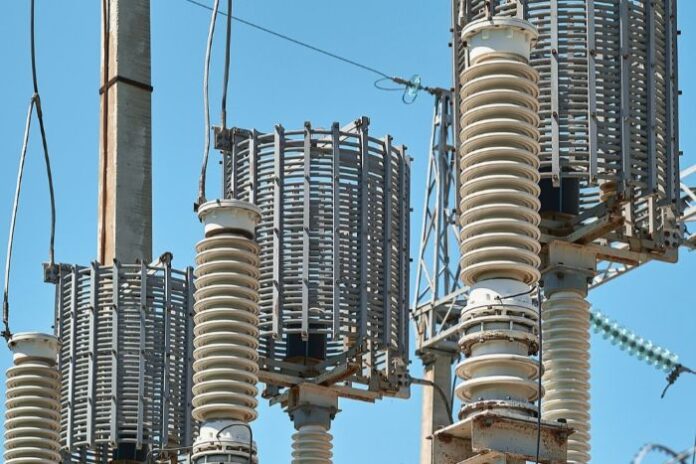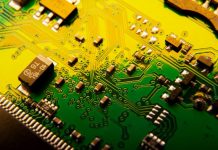Renewable energy is a solution the world needs, but this energy source is causing a lot of problems in the current electrical grid structure because it lacks rotational inertia. This makes the power grid unstable and unreliable if a large power plant goes offline. But this can change with grid-forming inverters, and here’s how.
Table of contents
What Is Rotational Inertia?
Traditional power plants (hydro, coal, natural gas, diesel, or nuclear) rotate turbines or turn engines directly from the energy produced by the fuel or via steam. This creates a rotational force with inertial energy that is synchronized in all power plants connected to the grid to maintain a stable frequency of 60 Hz (in the Americas and parts of Asia) or 50 Hz (for the rest of the world).
The rotational inertia in these turbines and engines helps to maintain a stable frequency and provides a power generation buffer to counter sudden changes in demand or supply. This is handy when issues occur at one power plant, making it go offline. If this happens, the grid’s frequency will start to drop but the rotational inertia keeps it a bit stable, giving the grid system time to react by rebalancing the grid. This can be through increasing generation from the online plants, load shedding, or activating reserves.
Current renewable energy sources, such as solar and wind, don’t have rotational inertia. You might think wind energy has it because the turbines rotate, but this isn’t true. Turbines rotate, that is true. But they aren’t connected directly to the grid because these turbines don’t rotate at the grid’s frequency. They can be faster or slower depending on the wind speed. So the AC output from these turbines is first converted to DC using rectifiers, then back to AC using inverters. This eliminates rotational inertia.
Some of the solutions that can be used to address the lack of rotational inertia include using synchronous condensers (via mechanical rotation), BESS (Battery Energy Storage Systems), pumped hydro storage, or grid-forming inverters. Grid-forming inverters are perhaps the cheapest solution to use, which makes them the most viable.
What Are Grid-Forming Inverters?
Grid-forming inverters are DC to AC converters that create and regulate their own voltage and frequency independently or in coordination with other sources. This effectively makes them virtual synchronous generators. Wind and solar have traditionally used grid-tied/grid-following inverters, which rely on the grid’s frequency, voltage, and phase to inject power into it.
You can already see the problem here. If a power plant goes offline and there’s no neighboring grid to import power from, the frequency will drop, and grid-tied inverters will follow this. Since there’s no rotational inertia, this drop happens instantaneously, resulting in a cascading shutdown of the connected power plants to prevent damage. Grid-following inverters don’t create and regulate their own frequency and voltage, so they also cannot be used to restart the grid (black start), which creates a significant problem when trying to restore power.
How Grid-Forming Inverters Make Grids Powered By Renewable Energy More Reliable
The biggest advantage of grid-forming inverters is that they create and regulate their voltage and frequency, and they can do this independently or in coordination with other sources. So if a power plant goes offline, these inverters can help to maintain the frequency at the required level before the grid imports power or sheds some of the load to maintain supply-demand balance. This is better than the entire grid going down, which means better resilience.
Such an installation came in handy on the Hawaiian island of Kauai on 2nd April 2023, which relied on 70% renewable energy per year from solar. But on that date, solar output had dropped and the sole 26MW oil-fired turbine was running near peak capacity to compensate for the lack of sunshine. At that time, this generator was providing 60% of the island’s power requirements with the rest coming from small-scale generators and utility-scale solar and battery-storage systems. This generator went offline but something interesting happened. The lights remained on.
On that date, Kauai had a battery storage system that held over 150 megawatt-hours, which would’ve been worthless if this energy was converted to AC using grid-tied inverters. But the island’s power operator, Kauai Island Utility Cooperative, had invested in grid-forming inverters, which tapped into the stored battery power to power, control, and stabilize the grid. This gave the utility company time to fix the turbine or shed load where power requirement wasn’t critical.
Why Grid-Forming Inverters Are Necessary
As the proportion of renewable energy in the grid (particularly wind and solar) increases to over 60%/70%, grid-tied inverters become more liabilities than assets. So as the world races to achieve net-zero carbon emissions by 2050, grid-forming inverters are critical for delivering stable AC across the globe.
Conclusion
As you can see, grid-forming inverters are critical in modern power grids, and they should be reliably made using high-frequency PCBs to ensure reliability. So if you want to explore or are already in this field, it is important to get a reputable PCB manufacturer and assembler to handle the hardware production for you. WellPCB has been fabricating PCBs for close to two decades and has amassed the expertise, equipment, and experience over the years to handle such complex electronics projects. The company assembles such critical infrastructure using IPC Class 3 standards to ensure maximum reliability and performance while keeping costs as reasonable as possible. Reach out to them to learn more about how you can partner in developing the electrical grid for the future.











